Wealdstone FC - We’ve Got Turret Syndrome
09/01/2022 - 10.38
Roger Slater
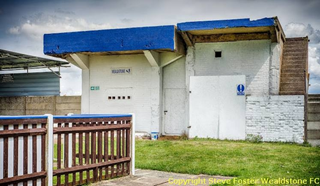
Source: Author's Collection
There it is, currently painted blue and white nestling in the top corner of the ground, but what do we know about it? Its variously been rumoured to be a Searchlight Tower or an Anti-Aircraft Gun Tower – in fact, it had both. The building some 30 metres to the rear (which you wont have seen unless you really look) has also been variously described as a Type 24 Pill Box according to the London Borough of Hillingdon listing details (seems unlikely due to construction and the fact its in the middle of a field!), whereas the English Heritage listing states it is a Magazine and/or Crew Quarters (the gun would have had a crew of 10 or 12), which is much more likely.
What else do we know? (There’s a theme here). It was obviously built to protect the approaches to RAF Northolt in World War Two…. No! That may well have been a secondary purpose, but it was actually built as part of the defences for the underground Munitions Store, part of which remains under the Ruislip LuL Depot. Now there are some tunnels I’d like to explore!

Source: Author's Collection
Okay, that’s enough with what we thought we knew but didn’t, so what is the actual story? It starts with the very first days of the Sports Ground. Originally part of Sherleys Farm, land was sold off for development in the early 1930s as the Ruislip estate was being developed, and part of this plan maintained the field at the end of what became Grosvenor Vale. This was subsequently sold to the Air Ministry and became the RAF Sports Ground and home to the RAF Apprentices teams.
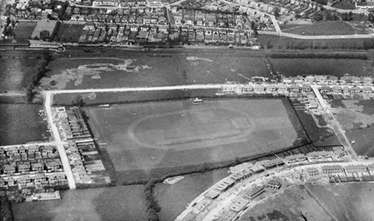
Source: Author's Collection
There was no stadium however, (as shown in the photograph taken just before World War Two started), a centrally located football pitch surrounded by an athletics track were the main features, and much of the local housing was yet to appear. The Ruislip Manor football club at this time incidentally played on the next pitch far down the road, New Pond Farm, in the area where Ruislip Gardens shops now stand – it wasn’t until around 1947, that they took over the Grosvenor Vale ground, on lease from the Air Ministry).
In 1936, as part of a Government/Military move to prepare for war, three major underground depots for Ammunition Storage (10-35,000 tons each) were developed to hold Incendiary and standard bombs as a reserve. These were each supported by Ammunition Parks (local storage across the UK to directly support bomber groups and Satellite sites, of which Ruislip was one of eight, it in turn supporting the store at RAF Chilmark in Wiltshire.
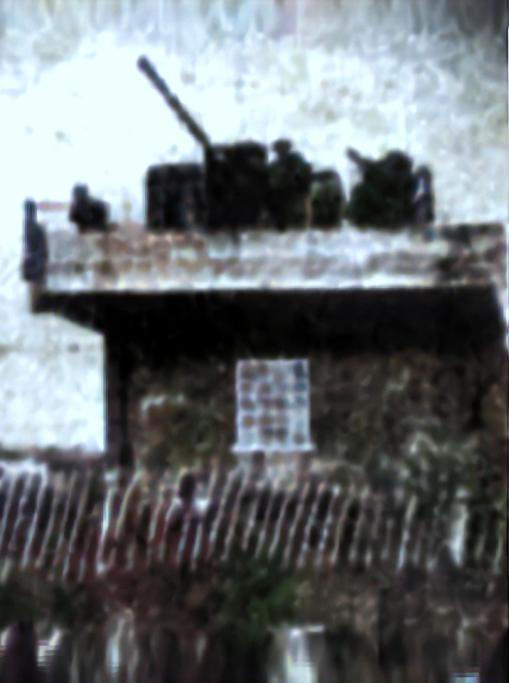
Not the actual Ruislip Tower but the same model. Source: Author's Collection
By the time World War Two started, the RAF Apprentices seem to have moved away from the as yet undeveloped site and the field lay dormant until 1940, when following a directive from the Air Ministry and the anticipation of Luftwaffe bombing raids extending to London, it was decreed that a Directorate of Fortifications and Works (DFW) Design 55087 Light Anti-Aircraft Gun Tower and ancillary building were constructed as defences for the Munitions Store.

Source: Author's Collection
It seems that only 81 towers of this type were built and less than ten are believed to exist today, which was part of the reason that ‘our’ tower gained a Grade II listing in May 2013, meaning it cannot be demolished nor changed in any way – in fact, it needs permission if it is to be repainted…..perhaps next time in the scheme more applicable to its period of service! (Please see picture below).
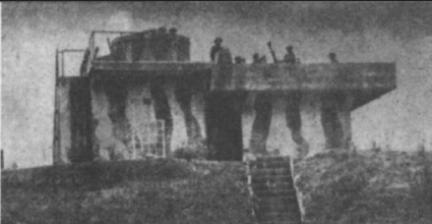
Source: Author's Collection
The tower was designed to raise a 40mm Bofors gun and its operational equipment above surrounding obstacles in order to achieve an all-round field of fire. By late 1940, this design had been superseded by a simpler, steel-framed type. Of equal importance at least is the remote Magazine. Built to differing specifications, often in adapted Anderson shelters, few have survived in any condition.
The construction comprises two elevated platforms, approximately 5 metres high, located immediately adjacent to each other, leaving a narrow gap between them at platform level. The Bofors gun would have been mounted on the larger (north-western) platform and its range predictor (to calculate enemy aircraft speed and height and thus ensure the accuracy of the gun) on the smaller (south-eastern) one. This was so that the gun’s recoil did not disrupt the predictor. The raised hexagonal concrete mount for the Bofors gun can still be seen in the centre of the gun platform.
The concrete frame has full-height brick infill which has been extended to the rear (north-east) of the range predictor platform to form a concrete-roofed extension. This had a large opening in the south-eastern elevation, now blocked. Small openings with concrete frames are set high in the brickwork to provide ventilation. There is another large blocked opening in the north-east wall of the infill of the gun platform.
Internally, the range predictor platform has two floors and the gun platform just one. An external concrete staircase along the south-east elevation provides access from the ground floor to the first floor ammunition store in the range predictor tower (the entrance door in the south-west elevation is bricked up) and then up to the roof. At ground level, the range predictor tower has a pillbox-type room with a low ceiling.
The gun platform has a single high-ceilinged room on the ground floor. This room and that in the extension to the rear of the range predictor platform would have housed the operations room and generator. Between the two platforms is a full-height ‘entrance lobby’ with an entrance in the south-west elevation.
We cannot say 100% that it ever saw action, but a look at the Bomb Map of the area in World War Two would indicate that it almost certainly was fired in anger and indeed may actually have been the target for a particular bombing raid between October 7th 1940 and 6th June 1942, when a string of High Explosive bombs were dropped directly across the playing fields with no others in close proximity!

Source: Author's Collection
Post-war, Ruislip Manor FC moved into the site and over a number of years established the football ground in the corner of the site where it remains today, slowly developing a post and rail pitch, then a main stand, dressing rooms and later the clubhouse, albeit the original has been extended a number of time.
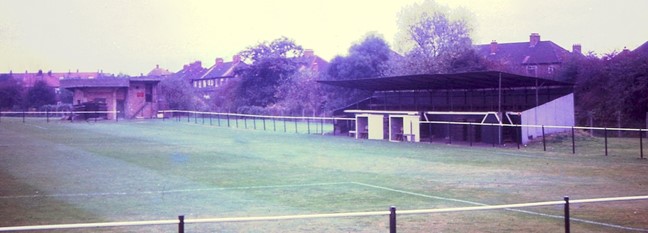
Source: RMSCC
Now, about that Railway Air Services DC3 Dakota that crash landed onto a house in Angus Drive in December 1948…
Biography
Roger Slater was born in Harrow in the late 1950s and has moved around a bit and retired to Devon with wife of 24 years, Helen. He originally trained as an Electrical Engineer but worked for almost 40 years in Building Services Technologies, primarily HVAC control systems and Electronic Security. Roger retired in 2018 having run his own Engineering Consultancy for almost 15 years.
For relaxation and hobbies, he writes, mainly about his football club, Wealdstone FC and has published eight books including a club history since 2002. (I don’t class myself as a historian, just an enthusiastic amateur).
He also writes for a fanzine/magazine called Where’s The Bar that has just relaunched.
Otherwise, hobbies are upcycling and building ‘strange’ lighting out of people’s rubbish and occasionally painting, though he also buys and sells at auctions and on the internet (mainly football related or antiques).
In respect of other sports, he will watch most but follows the Toronto Blue Jays avidly in baseball, as a result of working on and off in Canada in the early nineties.
Roger also reads and collects books on World War 1, in particular personal biographies and war diaries as opposed to battle histories…



/prod01/wlvacuk/media/departments/digital-content-and-communications/images-2024/Diane-Spencer-(Teaser-image).jpg)
/prod01/wlvacuk/media/departments/digital-content-and-communications/images-18-19/220325-Engineers_teach_thumbail.jpg)
/prod01/wlvacuk/media/departments/digital-content-and-communications/images-2024/240509-Menopause-Research-Resized.jpg)
/prod01/wlvacuk/media/departments/digital-content-and-communications/images/Maria-Serria-(teaser-image).jpg)
/prod01/wlvacuk/media/departments/digital-content-and-communications/images-2024/241014-Cyber4ME-Project-Resized.jpg)
/prod01/wlvacuk/media/departments/digital-content-and-communications/images-2024/240315-Research-Resized.jpg)
/prod01/wlvacuk/media/departments/digital-content-and-communications/images-2024/BDA-group-photo.jpg)